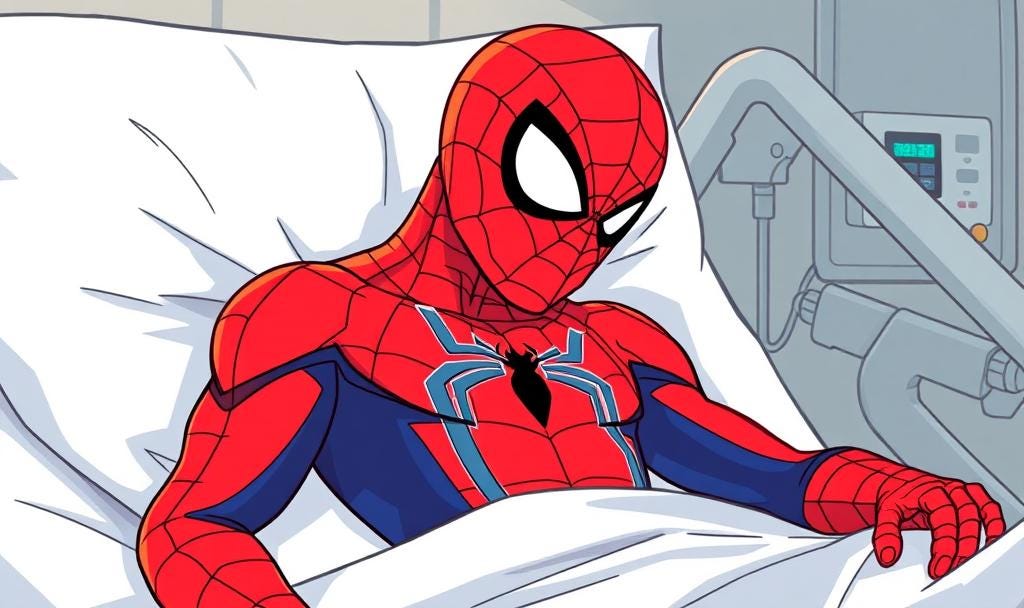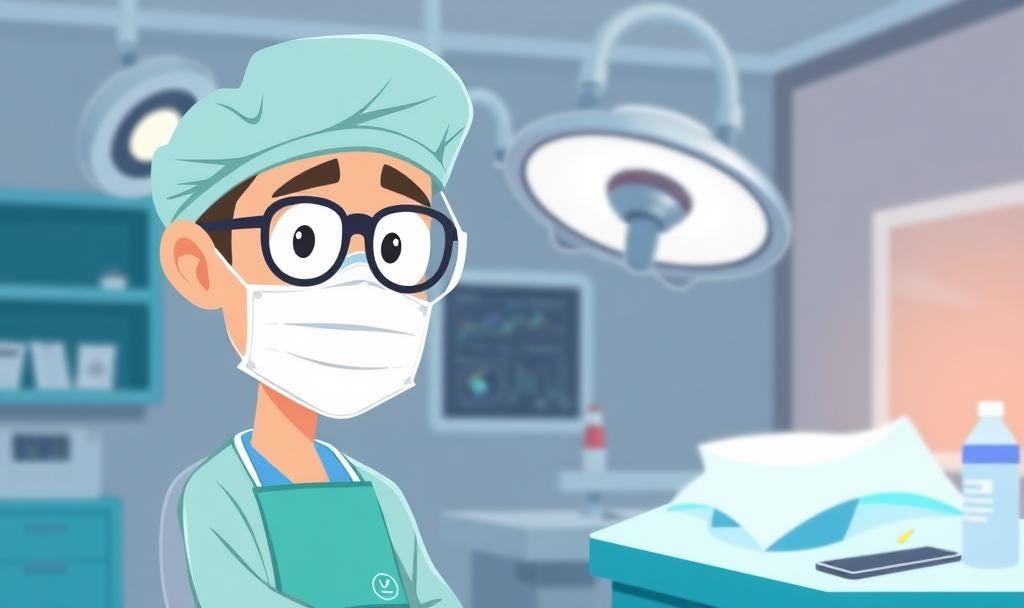The Forbidden Frequency That Rewired My Brain
How a mysterious sound therapy unlocked supernatural creativity
The anesthesia had worn off, but the mental fog hadn’t.
Three weeks after my hernia surgery, the physical pain was subsiding, but my creative mind remained disturbingly silent.
As a writer, this shutdown terrified me more than any physical complication. My doctor had warned me about the physical recovery timeframe, but no one had mentioned how anesthesia and pain medication could leave my creative processes in shambles.
"It's normal to experience some mental fog,"
My surgeon said during my follow-up appointment that his casual tone suggested this was a minor side effect.
"It should clear up in a few weeks."
But I didn’t have weeks.
I began researching recovery techniques.
I found scattered references to something unexpected between medical forums and neuroscience journals about sound frequencies and their effects on neural oscillation patterns
Most research focused on concentration and relaxation, but several studies mentioned enhanced creative thinking as a secondary benefit.
Skeptical but desperate, I ordered a pair of high-quality headphones and found a binaural beat program to produce alpha and theta brain waves. The first session felt strange, pulsing tones that seemed to circle inside my skull, neither pleasant nor unpleasant, just alien.
Twenty minutes into that first session, the mental heaviness that had plagued me since surgery began to lift noticeably like a thick fog thinning enough to make out shapes in the distance. I began writing, and while the results weren’t spectacular, I produced three usable paragraphs more than I’d managed in the previous three days combined.
What began as a desperate attempt to jumpstart my brain became a methodical exploration. I discovered that different frequency ranges affected different aspects of my thinking.
The alpha frequencies (8-12 Hz) helped with focused editing and analytical thinking while theta frequencies (4-7 Hz) opened unexpected creative pathways.
The post-surgical brain fog had inadvertently led me to a tool that didn’t just restore my previous creative capacity; it enhanced it beyond what I’d experienced before.
"Think of it like a symphony orchestra where some sections are playing out of sync. The frequencies you’re using are essentially helping the orchestra find its rhythm again."
But something even more interesting was happening.
As my brain reestablished its natural patterns with the help of these external frequencies, it formed new neural pathways and connections that hadn’t existed before the surgery.
The theta frequency sessions became particularly powerful.
During one session focused on 6 Hz tones, I solved a narrative problem that had stumped me for months before my surgery. The solution appeared fully formed as if it had been waiting for me to access the right brain state.
Initially, I told no one about my sound frequency experiment.
But when my neurologist noticed my unexpectedly rapid cognitive recovery, I hesitantly explained what I’d been doing.
To my surprise, she nodded with interest rather than skepticism:
"There is growing research on frequency following response and neural entrainment. We’re actually using similar approaches with some TBI patients, though it’s still considered experimental"
She directed me to several peer-reviewed studies and cautioned me to maintain a systematic approach, documenting which frequencies produced which effects and watching for adverse reactions.
With this medical validation, I refined my protocol.
The physical recovery from hernia surgery continued on its expected timeline, but my creative recovery accelerated dramatically, following an unexpected trajectory that led to unaccessed cognitive territories.
Six weeks post-surgery, I experienced the moment that transformed my relationship with sound frequency training from recovery tool to creative enhancement.
I was working on a complex scene requiring multiple characters with conflicting motivations, something that would have been challenging even before surgery.
After thirty minutes at my usual theta frequency, I shifted to a new frequency pattern alternating between alpha and theta ranges.
What happened next was that the scene unfolded in my mind with extraordinary clarity, not just the words but the emotional undercurrents, the subtle power dynamics, and the unspoken tensions.
I wrote continuously for three hours, producing work that required minimal revision later.
My friends thought it was great and even considered it amazing, not knowing it had been written during my experimental frequency session while still technically recovering from surgery.
This was accessing creative depths that had previously remained untapped.
What began as a desperate post-surgical recovery technique has become an integral part of my creative process.
I’ve learned to match specific frequencies to writing challenges: alpha frequencies for structural editing, theta for generative writing, and specialized patterns for problems requiring unusual creative connections.
The physical scars from my hernia surgery have faded, but the neural pathways opened during that recovery period have remained accessible. Strangely, the surgical disruption of my normal brain function created an opportunity to rebuild my creative processes with greater intentionality and range.
What began in the fog of post-surgical recovery led me to one of the most powerful creative tools I’ve encountered, proving that our most significant discoveries sometimes come when we’re forced to find new paths forward.
The Integrated Approach
Today, my writing process incorporates frequency training as one tool among many, demystified but no less valuable. I match specific frequencies to particular writing challenges, alpha waves for editing days, theta for generative sessions, and specialized patterns for unique problems.
The skeptic in me remains vigilant.
I continue to test and refine the approach, reading new research and adjusting protocols accordingly.
However, I no longer begin with the assumption that unfamiliar approaches must be invalid simply because they sound unconventional.
For other skeptically-minded writers, I offer this perspective that maintaining scientific rigor doesn't require dismissing novel approaches outright.
It means testing them properly, with appropriate controls and objective measurements.
Sometimes, the results will confirm your skepticism. But sometimes, perhaps when it matters most they will force you to reconsider what you thought you knew about the creative process.
The greatest scientific minds throughout history have been defined not by their certainty but by their willingness to be proven wrong. In my small way, I've come to understand the intellectual courage that is required.
The frequencies themselves aren't magical. The true magic lies in the brain's remarkable ability to access different states of consciousness and in our willingness to follow evidence wherever it leads, even when it challenges our most comfortable assumptions.
Recommended Read: Stealing Fire: How Silicon Valley, the Navy SEALs, and Maverick Scientists Are Revolutionizing the Way We Live and Work.






An interesting article 👍
It’s funny the same thing happened to me only it was just a five hour surgery. It was supposed to be three, but by the time I came out of anesthesia everything was foggy for at least a year maybe more and then finally after doing all kinds of brain games, listening to meditations, listening sound frequencies doing a lot of brain work And I also took a pill called prevision for about a year. I don’t know if it was helpful, but I started getting my memory back. I still do those things, but I’m very grateful for the memory I have.